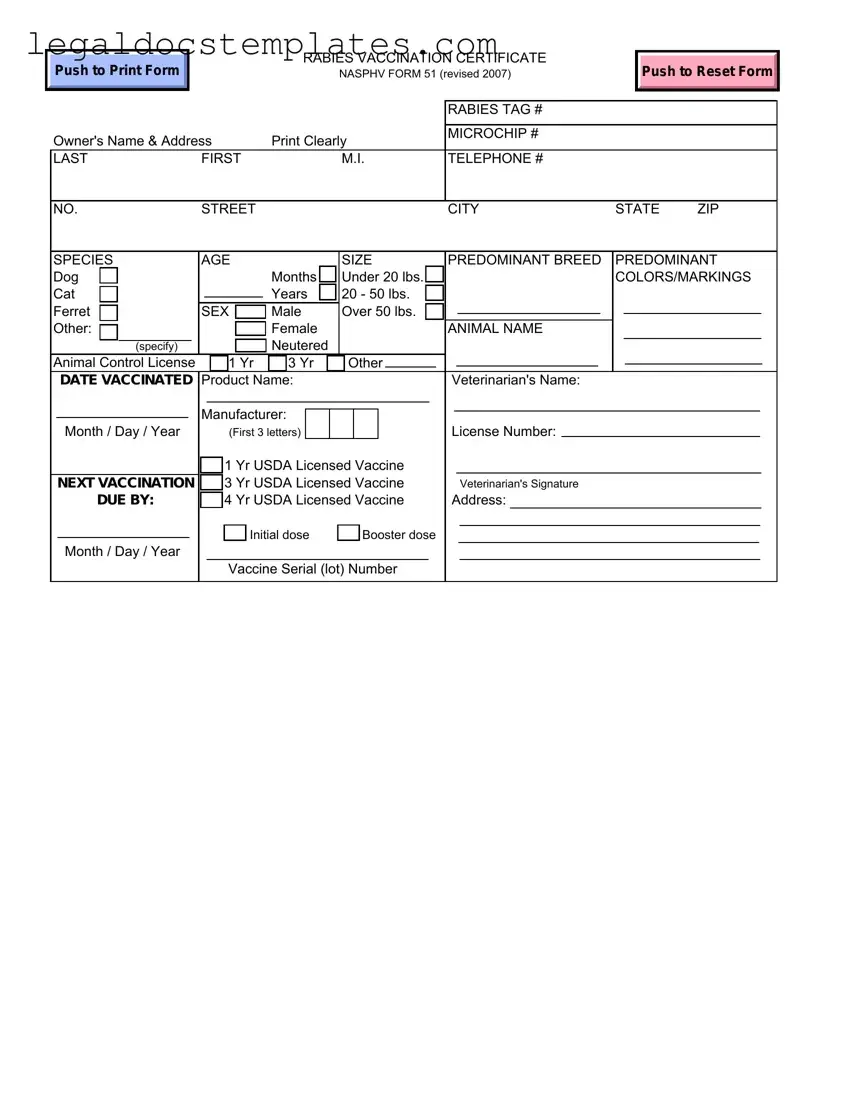The Pet Passport document bears resemblance to the Rabies Vaccination Certificate in its function and purpose. Both are essential for traveling with pets, especially when crossing international borders. The Pet Passport includes detailed information about the pet's health status, vaccinations, and the owner's information, much like the Rabies Certificate, which contains specifics about rabies vaccination, the pet's and owner's details, and the veterinarian's signature. This document ensures that the pet has received necessary vaccinations, making it safe to travel.
An Animal Adoption Certificate also shares similarities with the Rabies Certificate. This document typically includes the pet's name, breed, age, and the adopting owner's information, in addition to verifying the health and vaccination status of the animal during the adoption process. While its primary purpose is to formalize the adoption, the inclusion of health and vaccination details mirrors the rabies document's role in confirming the pet's rabies vaccination status.
A Health Certificate for pets is quite similar to the Rabies Vaccination Certificate, in that it provides a comprehensive overview of the pet's health status, certified by a veterinarian. This certificate includes information on various vaccinations, including rabies, and any other health inspections the pet has undergone. Its primary use is for travel and, in some cases, boarding, ensuring that all necessary health precautions have been taken, much like the Rabies Certificate, which focuses specifically on rabies vaccination.
A Service Animal Documentation has parallels with the Rabies Vaccination Certificate too. It typically includes identification information about the service animal, details about the training organization or individual, and the animal's health and vaccination records, including rabies. The purpose of this document is to confirm the animal's status as a service animal and ensure its vaccinations are up to date, similar to how the Rabies Certificate ensures the pet's rabies vaccination is current.
The Veterinary Receipt or Patient Chart, while serving as a record of payment and services rendered, often contains detailed information about vaccinations provided to the pet, including rabies. This document serves as proof of the pet's treatment history and vaccination status, ensuring the pet owner has a record of health care, mirably the Rabies Vaccination Certificate, which also certifies the administration of a rabies vaccine.
Microchip Registration Forms resemble the Rabies Certificate in that they contain detailed information about the pet, including the owner's contact information, the pet's name, species, breed, and importantly, the microchip number. These forms may also include vaccination records, making them a document that ensures a pet can be identified and its health status verified, similar to how the Rabies Certificate identifies the pet and its rabies vaccination status.
Lastly, an Animal Control License Certificate shares similarities with the Rabies Vaccination Certificate. It often requires proof of rabies vaccination for issuance, containing the pet's and owner's details, similar to the Rabies Certificate. This document serves as legal permission for pet ownership within certain municipalities, ensuring the pet has received its necessary rabies vaccine as part of the licensing requirements.

